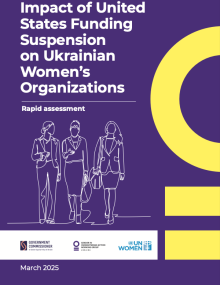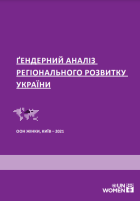1 - 6 of 6 Results
Date:
This publication provides data and analytical conclusions for the implementation of a comprehensive gender equality and human rights-based approach at all stages of the regional policy cycle - from the analysis of basic gender indicators for policy development to its implementation, monitoring and evaluation.
Date:
The Guidelines highlight fundamental theory and instructional techniques for integrating gender approaches into the educational process of higher education institutions in Ukraine’s security and defense sector; cover the essence, structure, content, forms and methods of gender component implementation in various daily activities; offer a unified approach to gender equality and provides useful practical recommendations for teachers, specialists, scientists and a wide range of experts in the security and defense sector.
Date:
This report on the proceedings of the global conference “Gender-inclusive peace processes: Strengthening women’s meaningful participation through constituency building” explores current challenges, best practices, and recommendations on how best to leverage the practice of constituency building to further gender-inclusive peace.
Date:
This guidelines explore the possibilities for the localization process of UNSCR 1325. The localization of UNSCR 1325 and the supporting women, peace and security resolution as well as costing and budgeting local and national action plans could significantly contribute to eliminating gaps in implementation.
Date:
This publication features the findings of safety audits of public spaces, as well as the results of online surveys and focus group discussions conducted with women from the conflict-affected communities of Soledar and Toretsk in Donetsk region and Novoaidar and Zolote in Luhansk region, in eastern Ukraine.
Date:
Following the principle "Nothing about us, without us," this study aims to better understand the capacity of women's organisations in Ukraine as the first step to improving assistance on the promotion of gender equality and women's empowerment. It is designed to create a baseline against which to measure future capacity development efforts. These findings can be used by the civil society, the government stakeholders and the donor community in their planning, coordination and capacity building initiatives.






